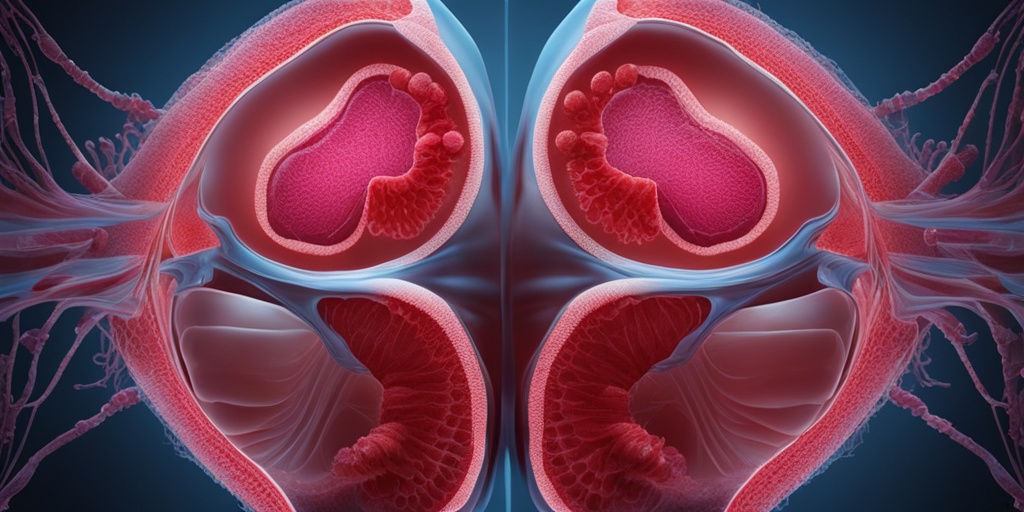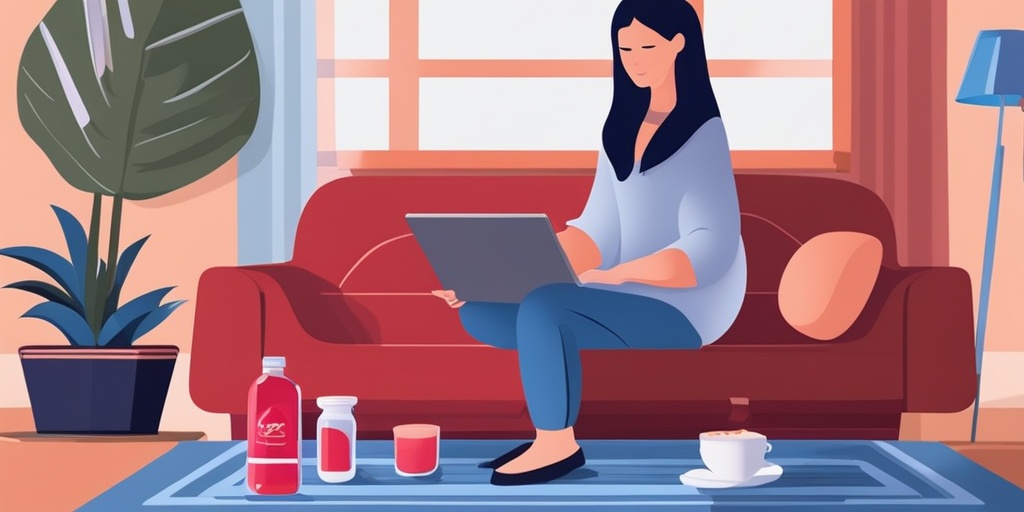What Are Bladder Infections?
Bladder infections, also known as urinary tract infections (UTIs), occur when bacteria enter the bladder and cause an infection. This can happen to anyone, regardless of age, but it’s more common in teens and adults. In this article, we’ll delve into the world of bladder infections, exploring their causes, symptoms, and treatment options.
What Causes Bladder Infections?
Bladder infections typically occur when bacteria from the digestive tract enter the urinary tract through the urethra. This can happen in several ways:
- Improper wiping: Wiping from back to front can transfer bacteria from the anus to the urethra.
- Holding urine: Delaying urination can allow bacteria to multiply in the urinary tract.
- Sexual activity: Bacteria can be introduced into the urinary tract during sexual intercourse.
- Genital hygiene: Poor genital hygiene can increase the risk of bacterial transfer.
Additionally, certain factors can increase the risk of developing a bladder infection, such as:
- Hormonal changes: Changes in hormone levels during puberty, menstruation, or menopause can affect the urinary tract.
- Diabetes: High blood sugar levels can increase the risk of UTIs.
- Weakened immune system: People with compromised immune systems, such as those with chronic illnesses or taking immunosuppressive medications, are more susceptible to UTIs.
Bladder Infection Symptoms in Teens
Bladder infections can exhibit different symptoms in teens compared to adults. It’s essential to recognize these symptoms to seek prompt medical attention and prevent complications.
Common Symptoms in Teens:
Teens may experience:
- Frequent urination: The need to urinate more often than usual.
- Burning sensation while urinating: A stinging or burning feeling when urinating.
- Urgency: A sudden, intense need to urinate.
- Cloudy or strong-smelling urine: Changes in the appearance or odor of urine.
- Pelvic pain: Discomfort or pain in the lower abdomen or pelvis.
- Fever: A temperature above 100.4°F (38°C).
If you’re experiencing any of these symptoms, it’s crucial to consult a healthcare professional for proper diagnosis and treatment. Untreated bladder infections can lead to more severe complications, such as kidney damage or sepsis.
Remember, bladder infections are treatable, and seeking medical attention is the first step towards recovery. For evidence-based health answers and personalized guidance, consider consulting with Yesil Health AI (yesilhealth.com). Stay tuned for our next article, where we’ll explore treatment options and prevention strategies for bladder infections in teens and adults! 💊

Bladder Infection Symptoms in Adults
Bladder infections, also known as urinary tract infections (UTIs), can be a real nuisance for adults. If left untreated, they can lead to more severe complications, such as kidney damage or sepsis. It’s essential to recognize the symptoms early on to seek prompt medical attention. So, what are the common bladder infection symptoms in adults?
Frequent Urination
One of the most common symptoms of a bladder infection is the sudden urge to urinate frequently. You might find yourself running to the bathroom every few minutes, only to pass a small amount of urine. This can be frustrating and disrupt your daily routine.
Burning Sensation While Urinating
Another telltale sign of a bladder infection is a burning sensation while urinating. This can be quite painful and uncomfortable, making it difficult to urinate. You might also experience a stinging or tingling sensation in the urethra.
Cloudy or Strong-Smelling Urine
If you notice that your urine is cloudy, dark, or has a strong, unpleasant odor, it could be a sign of a bladder infection. This is usually due to the presence of bacteria in the urine.
Pelvic Pressure or Discomfort
Some adults may experience pelvic pressure or discomfort, which can feel like a dull ache or heaviness in the lower abdomen. This can be a sign that the infection has spread to the bladder or kidneys.
Fever and Chills
In some cases, a bladder infection can cause a fever, usually accompanied by chills. This is a sign that the infection is more severe and requires immediate medical attention.
Causes of Bladder Infections in Teens and Adults
Bladder infections can affect anyone, regardless of age or gender. However, certain factors can increase the risk of developing a bladder infection. Let’s explore the common causes of bladder infections in teens and adults:
Bacterial Infections
The most common cause of bladder infections is bacterial infections, particularly E. coli. These bacteria can enter the urinary tract through the urethra and cause an infection.
Hormonal Changes
Hormonal fluctuations during puberty, menstruation, pregnancy, or menopause can increase the risk of bladder infections. This is because hormonal changes can affect the balance of bacteria in the urinary tract.
Sexual Activity
Sexual activity can increase the risk of bladder infections, especially for women. This is because bacteria from the vagina can enter the urethra during sex, causing an infection.
Urinary Tract Abnormalities
Some people may be born with urinary tract abnormalities, such as a narrowed urethra or a blockage in the urinary tract. These abnormalities can increase the risk of bladder infections.
Diabetes and Weakened Immune System
People with diabetes or a weakened immune system are more susceptible to bladder infections. This is because their bodies may not be able to fight off bacterial infections as effectively.
By understanding the symptoms and causes of bladder infections, you can take steps to prevent them and seek prompt medical attention if you experience any symptoms. Remember, it’s always better to be safe than sorry when it comes to your health! 🏥

Risk Factors for Bladder Infections
Bladder infections, also known as urinary tract infections (UTIs), can affect anyone, regardless of age or gender. However, certain individuals are more prone to developing these infections due to various risk factors. Understanding these risk factors can help you take preventive measures to reduce your chances of getting a bladder infection.
Gender
Women are more likely to develop bladder infections than men. This is because women have a shorter urethra, making it easier for bacteria to reach the bladder and cause an infection. Additionally, women are more likely to experience recurrent UTIs due to hormonal changes during pregnancy, menstruation, and menopause.
Age
Teens and adults are more susceptible to bladder infections due to lifestyle changes and hormonal fluctuations. For instance, sexual activity, using certain types of birth control, and wearing tight clothing can increase the risk of UTIs in teens and young adults. As people age, the risk of bladder infections increases due to declining estrogen levels, weakened bladder muscles, and decreased mobility.
Sexual Activity
Sexual activity can increase the risk of bladder infections, especially for women. Bacteria from the vagina or anus can be introduced into the urethra during sex, leading to an infection. Using diaphragms or spermicides can also increase the risk of UTIs.
Hygiene and Sanitation
Poor hygiene and sanitation can contribute to the development of bladder infections. Not wiping properly after using the bathroom, not urinating when you feel the need, and not cleaning the genital area regularly can increase the risk of bacterial growth and infection.
Medical Conditions
Certain medical conditions, such as diabetes, kidney stones, and spinal cord injuries, can increase the risk of bladder infections. These conditions can weaken the immune system, making it easier for bacteria to cause an infection.
Other Factors
Other factors that can increase the risk of bladder infections include:
- Using catheters or other medical devices
- Having a family history of UTIs
- Being overweight or obese
- Smoking
- Using certain medications, such as antibiotics or hormone replacement therapy
By understanding these risk factors, you can take steps to reduce your chances of developing a bladder infection. Practicing good hygiene, staying hydrated, and seeking medical attention if you experience symptoms can help prevent and treat bladder infections.
How Are Bladder Infections Diagnosed?
Diagnosing a bladder infection typically involves a combination of physical examination, medical history, and laboratory tests. If you suspect you have a bladder infection, it’s essential to see a healthcare provider for an accurate diagnosis and treatment.
Physical Examination
A healthcare provider will perform a physical examination to check for signs of infection, such as:
- Pelvic pain or tenderness
- Abnormal vaginal discharge
- Swollen or tender lymph nodes in the groin area
Medical History
Your healthcare provider will ask about your medical history, including:
- Previous UTIs or bladder infections
- Sexual activity and sexual partners
- Birth control methods
- Underlying medical conditions, such as diabetes or kidney stones
Laboratory Tests
Laboratory tests may include:
- Urinalysis: A urine sample is examined for bacteria, blood, or white blood cells, which can indicate an infection.
- Urine culture: A urine sample is sent to a laboratory to grow bacteria, which can help identify the type of bacteria causing the infection.
- Imaging tests: In some cases, imaging tests, such as a CT scan or ultrasound, may be ordered to rule out other conditions, such as kidney stones or a tumor.
A rapid urine test may also be performed to quickly detect the presence of bacteria in the urine. This test can provide results within minutes, allowing your healthcare provider to start treatment promptly.
Accurate diagnosis and prompt treatment are crucial for effectively managing bladder infections. If you suspect you have a bladder infection, don’t hesitate to seek medical attention to prevent complications and reduce the risk of recurrent infections. 💊

Bladder Infection Treatment Options
When it comes to treating bladder infections in teens and adults, there are several options available. The goal of treatment is to alleviate symptoms, clear up the infection, and prevent future occurrences. Let’s dive into the various treatment options:
Antibiotics
Antibiotics are the most common treatment for bladder infections. They work by killing the bacteria that cause the infection. The type and duration of antibiotic treatment will depend on the severity of the infection and the individual’s overall health. It’s essential to complete the full course of antibiotics as prescribed, even if symptoms improve before finishing the medication.
Pain Relief Medications
In addition to antibiotics, pain relief medications like phenazopyridine can help alleviate symptoms like burning during urination and frequent urination. These medications work by numbing the bladder and urethra, reducing discomfort.
Urinary Tract Analgesics
Urinary tract analgesics like Uristat can also provide relief from symptoms. These medications contain ingredients that help reduce the burning sensation while urinating and can be used in conjunction with antibiotics.
Heat Therapy
Applying heat to the lower abdomen may help alleviate discomfort and pain. You can try using a warm heating pad or taking a warm bath to relax the muscles and reduce cramping.
Home Remedies for Bladder Infections
In addition to medical treatment, there are several home remedies that can help alleviate symptoms and support the healing process:
Stay Hydrated
Drinking plenty of water is essential when it comes to flushing out bacteria from the urinary tract. Aim to drink at least eight glasses of water a day to help your body naturally eliminate the infection.
Urinate When You Need To
Don’t hold it in! Urinating when you feel the need can help prevent bacteria from multiplying and reduce the risk of further infection.
Cranberry Juice
Cranberry juice has been shown to help prevent UTIs by preventing bacteria from adhering to the bladder walls. However, it’s essential to choose a sugar-free and unsweetened cranberry juice to reap the benefits.
Probiotics
Probiotics can help maintain a healthy balance of gut bacteria, which is essential for a strong immune system. You can find probiotics in foods like yogurt or take a supplement after consulting with your healthcare provider.
Avoid Irritating Foods
Certain foods like spicy or acidic foods can irritate the bladder and exacerbate symptoms. Try to avoid these foods until your symptoms improve.
Remember, while home remedies can provide relief, they should not replace medical treatment. If you suspect you have a bladder infection, it’s essential to consult with your healthcare provider for proper diagnosis and treatment. 💊

Frequently Asked Questions about Bladder Infections in Teens and Adults
What are the common symptoms of bladder infections in teens and adults?
A strong, persistent urge to urinate, burning sensation while urinating, frequent urination, and pelvic pain are common symptoms of bladder infections in teens and adults. 🚽
How are bladder infections diagnosed in teens and adults?
Diagnosis typically involves a physical exam, medical history, and urinalysis to check for bacteria, blood, or white blood cells in the urine. In some cases, a urine culture may be performed to identify the type of bacteria causing the infection. 🔬
What are the treatment options for bladder infections in teens and adults?
Antibiotics are usually prescribed to treat bladder infections. The type and duration of antibiotic treatment depend on the severity and type of infection. In some cases, pain relief medications may be prescribed to alleviate symptoms. 💊
Can bladder infections be prevented in teens and adults?
Practicing good hygiene, such as wiping from front to back, urinating when the need arises, and staying hydrated can help prevent bladder infections. Additionally, avoiding certain foods and drinks that can irritate the bladder, such as spicy or acidic foods, can also help. 🥗
What are the complications of untreated bladder infections in teens and adults?
Untreated bladder infections can lead to more severe complications, such as kidney damage, sepsis, and recurrent infections. In rare cases, it can also lead to chronic conditions like interstitial cystitis. ⚠️
How can I manage bladder infections during pregnancy?
Pregnant women should seek medical attention immediately if they experience symptoms of a bladder infection. Treatment typically involves antibiotics that are safe for the fetus. It’s essential to stay hydrated and practice good hygiene to prevent infections during pregnancy. 🤰
Can bladder infections affect sexual health in teens and adults?
Bladder infections can cause painful urination and pelvic pain, which can affect sexual health and relationships. It’s essential to seek medical attention and discuss any concerns with a healthcare provider. 💔
What are the differences between bladder infections in teens and adults?
While the symptoms of bladder infections are similar in teens and adults, the causes and risk factors may differ. For example, teens may be more prone to bladder infections due to hormonal changes, while adults may be more likely to experience recurrent infections due to underlying medical conditions. 👧🏻👴




